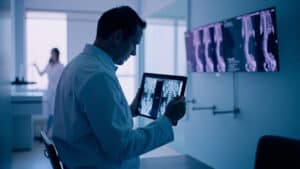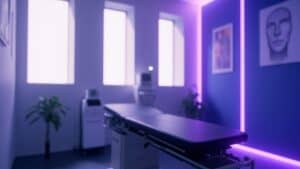A Comprehensive Guide
Quick Insights
A herniated disc occurs when spinal disc material presses on nearby nerves, causing pain. The best painkillers are NSAIDs like ibuprofen, proven effective according to recent, evidence-based medical research.
Key Takeaways
- NSAIDs are first-line painkillers for herniated disc pain, offering effective relief with a strong safety profile.
- Persistent or severe pain may require prescription nerve pain medications or short-term use of opioids under a doctor’s monitoring.
- Muscle relaxants are often prescribed for associated muscle spasms common with herniated discs.
- Consulting a pain management specialist ensures personalized treatment and safer medication use, especially for ongoing symptoms.
Why It Matters
Understanding the best painkiller for herniated disc pain empowers you to manage discomfort, regain mobility, and protect your overall well-being. Quick, informed choices can reduce anxiety and help you avoid prolonged suffering or unnecessary side effects, improving your confidence in daily life.
Introduction
As a board-certified specialist in Pain Medicine and Physical Medicine & Rehabilitation with over two decades of experience, I understand how herniated disc pain can disrupt every aspect of daily life for my Houston patients. To learn more about my background and commitment to patient care, see Dr. Matthias Wiederholz.
A herniated disc develops when the soft nucleus pulposus—the inner core of the spinal disc—pushes through a weakened annulus fibrosis, the tough outer layer, irritating nearby nerves. This process can trigger significant pain, numbness, or muscle weakness, especially during routine movements or when sitting for long periods.
I’ve seen firsthand how these symptoms can impact patients, and as Houston’s first physician trained directly by the Discseel® Procedure’s inventor, I have dedicated my practice to finding the safest and most effective solutions. For most individuals, the best painkiller for herniated disc pain is a nonsteroidal anti-inflammatory drug (NSAID) such as ibuprofen or naproxen, which provide proven relief for both inflammation and discomfort when first-line pain management is required. If you want a deeper understanding of these options and related spine issues, see our comprehensive guide to L5-S1 bulging disc.
Lasting relief is possible—let’s navigate your options for herniated disc treatment in Houston with clear, evidence-based answers.
Used source: https://www.mayoclinic.org/diseases-conditions/herniated-disk/diagnosis-treatment/drc-20354103

Best Painkiller for Herniated Disc: Top Options and How to Choose
A herniated disc, also known as a slipped or prolapsed disc, occurs when the soft center of a spinal disc pushes through its tough outer layer, pressing on nearby nerves and causing pain, numbness, or weakness. Managing this discomfort effectively often involves a combination of medications and therapies tailored to individual needs.
Nonsteroidal Anti-Inflammatory Drugs (NSAIDs):
NSAIDs like ibuprofen (Advil, Motrin) and naproxen (Aleve) are commonly recommended as first-line treatments for herniated disc pain. They work by reducing inflammation and alleviating pain. For instance, a typical dosage for ibuprofen is 1–2 (200-mg) tablets every 4–6 hours, not exceeding 1,200 mg per day. Similarly, naproxen is often taken as 1–2 (220-mg) tablets every 8–12 hours, with a maximum of 660 mg per day. Mayo Clinic: Herniated Disk Treatment
Acetaminophen:
For individuals who cannot tolerate NSAIDs, acetaminophen (Tylenol) serves as an alternative. While it effectively manages pain, it lacks anti-inflammatory properties, which may limit its effectiveness in cases where inflammation contributes significantly to discomfort.
Muscle Relaxants:
If muscle spasms accompany the herniated disc pain, muscle relaxants such as cyclobenzaprine (Flexeril) or methocarbamol (Robaxin) may be prescribed. These medications help alleviate muscle tightness, providing additional comfort and improving mobility.
Nerve Pain Medications:
For nerve-related pain, medications like gabapentin (Neurontin) or pregabalin (Lyrica) may be considered. These drugs act on nerve impulses to reduce pain and can be particularly useful if you experience shooting or burning sensations down your leg.
Opioids:
In cases of severe pain unresponsive to other treatments, short-term use of opioids such as codeine or oxycodone may be considered. Due to the risk of dependence and side effects, these are typically prescribed for a limited duration under close medical supervision.
Topical Analgesics:
Creams or patches containing lidocaine or menthol provide localized relief with minimal systemic side effects. These treatments can be applied directly to the affected area, offering a targeted approach to managing discomfort associated with a herniated disc.
For those who want to understand the full spectrum of medication options, you can further explore the best painkillers for herniated disc with additional detail.
If your pain continues despite medication, consider consulting a back pain doctor for herniated disc to explore additional therapies tailored to your needs.
Comparing Painkiller Options:
| Painkiller Type | Pros | Cons |
|---|---|---|
| NSAIDs | Effective, OTC, low risk short-term | GI upset, kidney risk if overused |
| Opioids | Strong pain relief | Addiction, drowsiness, constipation |
| Muscle Relaxants | Eases spasms | Drowsiness, short-term only |
| Antidepressants/Neuro | Targets nerve pain | Dizziness, dry mouth, variable effect |
| Topical Analgesics | Local relief, few side effects | Mild, short-lasting |
NSAIDs remain the best painkiller for herniated disc pain for most people, supported by both my clinical experience and current research as outlined by Spine-health. For persistent or severe pain, I tailor pain management for herniated disc to each patient, sometimes combining medications for optimal relief. You may also find value in reading about effective treatment options for L5-S1 disc herniation pain to see how medications fit into comprehensive care.

When to Seek Medical Attention
It’s crucial to consult a healthcare professional if you experience:
- Sudden loss of bladder or bowel control
- Severe or worsening leg weakness
- Numbness in the groin or saddle area
These symptoms may signal a serious nerve problem. Ongoing severe pain also warrants prompt evaluation by a pain management specialist in Houston. Learn more about emergency symptoms.
For deeper understanding of when disc pain becomes an emergency, see our article on emergency symptoms of a herniated disc.
Alternatives & Complementary Therapies for Herniated Disc Pain
In my 20 years of treating spine conditions, I’ve found that combining painkillers with non-drug therapies often leads to the best outcomes. Many herniated disc treatment options in Houston include these alternatives, tailored to each patient’s needs.
Painkiller Alternatives and Complementary Therapies:
- Physical Therapy: A physical therapist guides you through exercises to strengthen core and back muscles, improve flexibility, and reduce pressure on the disc. This is a first-line approach for long-term pain management per Mayo Clinic recommendations. Learn more about herniated disc exercises that can aid the recovery process.
- Exercise: Low-impact activities like walking, swimming, or cycling help maintain mobility and support healing. I advise starting slowly and increasing activity as tolerated. Read about other new treatments for ruptured discs to stay current on innovative therapies.
- Hot and Cold Therapies: Applying heat relaxes muscles, while cold packs reduce inflammation. Alternating these can provide effective, drug-free relief.
- Acupuncture: This traditional Chinese technique may help reduce pain for some patients. While evidence is mixed, I’ve seen individuals benefit when it’s used alongside standard care as noted by Healthline.
- Yoga and Mindfulness: Gentle stretching, breathing exercises, and meditation can decrease pain perception and improve function. I recommend these especially for patients seeking holistic pain management for herniated disc.
- Minimally Invasive Procedures: For those not improving with conservative care, options like injections or advanced procedures are available—see the next section for details, including the Discseel® procedure for herniated disc and other innovative treatments.
Standard vs. Innovative Options:
- Standard: Physical therapy, exercise, hot/cold, acupuncture, yoga
- Innovative: Minimally invasive procedures (e.g., Discseel®), regenerative medicine
Always consult a spine specialist for disc pain before starting new therapies. Individualized advice ensures safety and maximizes results. For patients considering minimally invasive options, see below for more details.

Minimally Invasive and Advanced Procedures for Herniated Disc Pain (Incl. Discseel®)
When conservative treatments aren’t enough, I often discuss minimally invasive procedures with my patients. These approaches offer pain relief with less risk and faster recovery than open surgery. My experience as one of only three master instructors for Discseel® has shown that the right procedure can restore function and quality of life.
Minimally Invasive Procedures:
- Minimally Invasive Discectomy: Removes part of the herniated disc through a small incision, relieving nerve pressure. Best for patients with persistent nerve pain and clear disc herniation. Recovery is typically faster than traditional surgery.
- Endoscopic Approaches: Use a tiny camera and instruments to treat the disc with minimal tissue disruption. I recommend these for select cases where precision and rapid recovery are priorities.
- Corticosteroid Injections: Deliver anti-inflammatory medication directly to the affected area, reducing swelling and pain. These are often used for short-term relief while pursuing other therapies.
- Discseel® Procedure: This innovative, non-surgical treatment uses a biologic fibrin sealant to repair damaged discs and stimulate natural healing. As the first physician to bring Discseel® to Houston, I’ve seen many patients regain mobility without surgery. The procedure is performed on an outpatient basis, with most returning to daily activities within days. Discseel® is especially suited for those with annular tears, failed back surgery, or degenerative disc disease as supported by current research. For a deep dive into real-world results, explore our article on Discseel reviews and achieving lasting back pain relief.
If you’re interested in the science, patient stories, and broader context of this treatment, the official Discseel® procedure website offers additional research and educational resources.
Patient Testimonial:
“My personal experience with Dr. Wiederholz—based on both appointments and other communications—has been fantastic. He seems to be determined to make sure you understand your own pain issues and treatment options. He will answer every question you may have, without making you feel like he is getting impatient. I highly recommend him, without reservation.” —Paul (Read full review)
See if you are a candidate for the Discseel® Procedure – schedule a consultation with our Houston pain specialists today.
For those seeking herniated disc treatment in Houston, consulting a herniated disc specialist near me is the next step. Take our short quiz: Is the Discseel® Procedure right for you?

What Our Patients Say on Google
Patient experiences are at the heart of my approach to spine care, especially as someone who trains physicians nationally in advanced procedures. Feedback from those I’ve helped is a powerful reminder of why I strive for clarity and compassion in every consultation.
A recent review from Paul captures the patient-centered philosophy I bring to my Houston clinic:
“My personal experience with Dr. Wiederholz—based on both appointments and other communications—has been fantastic. He seems to be determined to make sure you understand your own pain issues and treatment options. He will answer every question you may have, without making you feel like he is getting impatient. I highly recommend him, without reservation.” —Paul
You can read more Google reviews here.
Hearing this kind of feedback reinforces my commitment to providing clear, evidence-based guidance on the best painkillers and advanced options for herniated disc pain.
If you’re located in Houston, learn more about our Houston location and treatment options for in-person or virtual consultations.

Herniated Disc Pain Relief in Houston
Living in Houston means access to a wide range of advanced spine care options, including innovative treatments for herniated disc pain. As the first physician to bring the Discseel® Procedure to Houston, I’ve seen how local patients benefit from minimally invasive solutions that preserve mobility and support active lifestyles.
Houston’s diverse and active population often faces unique spine health challenges, from physically demanding jobs to year-round outdoor activities. According to recent research, early intervention and personalized pain management can significantly improve outcomes for those with herniated discs.
My practice is dedicated to offering both established and cutting-edge therapies, ensuring that every patient receives care tailored to their needs right here in Houston. If you’re seeking a herniated disc specialist near you, I invite you to explore your options with a consultation. To learn more about the range of causes and solutions, visit our overview of L5-S1 pain and its causes, symptoms, and treatment.
*This content reflects current medical guidelines and Dr. Wiederholz’s 20+ years of clinical experience.*
Conclusion
Drawing from my quadruple board certification and two decades of practice, I know that the best painkiller for herniated disc pain is usually an NSAID, such as ibuprofen or naproxen, supported by strong clinical evidence. For persistent symptoms, options like muscle relaxants, nerve pain medications, or minimally invasive procedures—including the Discseel® Procedure—can be considered as part of a comprehensive, individualized plan. Houston patients benefit from access to both established and advanced therapies, ensuring care is tailored to your needs.
If you’re ready to explore your options, see if you are a candidate for the Discseel® procedure by scheduling a consultation today. As a board-certified specialist, I am committed to providing evidence-based, patient-centered care for every stage of your spine health journey.
For answers to your questions or to schedule an appointment with our team, contact us for a consultation.
*This article is for educational purposes only and should not be used as a substitute for professional medical advice, diagnosis, or treatment. Always seek the advice of your physician or other qualified healthcare provider with any questions you may have regarding a medical condition or treatment options. Never disregard professional medical advice or delay in seeking it because of something you have read in this article.*
Frequently Asked Questions
What is the best painkiller for a herniated disc?
The best painkiller for a herniated disc is typically a nonsteroidal anti-inflammatory drug (NSAID) like ibuprofen or naproxen. These medications reduce both inflammation and pain, and are recommended as first-line therapy by leading medical organizations. For more details, see the Mayo Clinic’s herniated disc treatment guidelines.
Where can I find herniated disc treatment in Houston?
You can find herniated disc treatment in Houston at specialized pain management clinics, including my practice at Performance Pain and Sports Medicine. We offer a full range of options—from painkillers and physical therapy to minimally invasive procedures—tailored to your specific needs. Always consult a physician to determine the best approach for your situation.
How do I choose the right pain management plan for my work and lifestyle?
Choosing the right pain management plan depends on your daily activities, job demands, and overall health. I recommend starting with NSAIDs and physical therapy, then considering additional treatments if pain persists. A personalized plan—developed with your physician—ensures you can maintain function and minimize side effects while addressing your unique professional needs.















